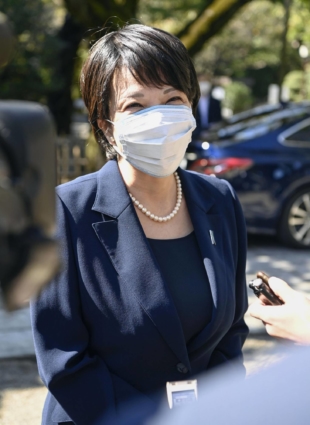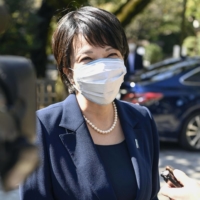Sanae Takaichi, policy chief of the ruling Liberal Democratic Party, visited the war-linked Yasukuni Shrine on Monday to celebrate its autumn festival.
The Shinto shrine, which honors convicted war criminals along with the war dead, is viewed as a symbol of Japan's past militarism by its Asian neighbors.
The hard-line conservative member of the LDP, who often visited the shrine while she was a Cabinet minister, recently said she would continue going there even if she was elected prime minister.

"As a Japanese, it is only natural to offer my gratitude" to those who "died for a national policy," said Takaichi, who lost in the party's leadership race late last month in which Fumio Kishida won and subsequently became prime minister. "This is not an issue of diplomacy."
Her visit comes after Kishida on Sunday sent a ritual offering for the shrine's biannual festival, prompting South Korea to express "deep disappointment and regret" and urge Japanese leaders to "squarely face history."
Kishida, who became prime minister on Oct. 4, is not expected to make a visit to the shrine during the two-day festival, which began Sunday.
Past visits by Japanese leaders and lawmakers have especially angered China and South Korea, where memories of Japan's wartime acts still rankle. The shrine venerates those who died in wars fought by the Japanese government, worshipping their souls as deities.
Most of the around 2.5 million people enshrined at Yasukuni are military servicemen and civilian employees of the Japanese military, but wartime Prime Minister Gen. Hideki Tojo and 13 other Class-A war criminals were added to the enshrined deities in 1978, stirring controversy in Japan and abroad.



